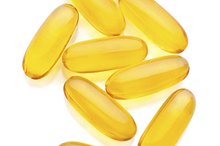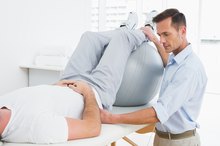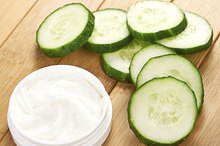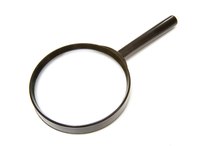What does fact checked mean?
At Healthfully, we strive to deliver objective content that is accurate and up-to-date. Our team periodically reviews articles in order to ensure content quality. The sources cited below consist of evidence from peer-reviewed journals, prominent medical organizations, academic associations, and government data.
- "Reviews in Urology"; "Peyronie's disease"; Dr. Mark Jalkut et al; 2003
- "Reviews in Urology"; "Peyronie's disease"; Dr. Mark Jalkut et al; 2003
The information contained on this site is for informational purposes only, and should not be used as a substitute for the advice of a professional health care provider. Please check with the appropriate physician regarding health questions and concerns. Although we strive to deliver accurate and up-to-date information, no guarantee to that effect is made.
Acetyl L-Carnitine and Peyronie's Disease
Peyronie's disease is a mild condition that involves the abnormal curvature of the penis during erection, which might be associated with pain and erectile dysfunction. It was previously thought that penile trauma, or trauma to the shaft of the penis, is the major cause of Peyronie's disease, but recent studies show that the development of Peyronie's disease cannot be explained by penile trauma alone. Acetyl L-carnitine is a supplement proven to be beneficial in reducing symptoms associated with Peyronie's disease.
If you are experiencing serious medical symptoms, seek emergency treatment immediately.
Acetyl L-Carnitine
Acetyl L-carnitine is a naturally occurring supplement found in both plants and animals. It is involved in the metabolism of carbohydrates and fats. According to a 2003 "Reviews in Urology" article, the supplementation of acetyl L-carnitine resulted in greater improvements in penile pain and scars compared with a group treated with tamoxifen, a substance thought to reduce scar formation in the penis. Acetyl L-carnitine also resulted in fewer side effects.
- Acetyl L-carnitine is a naturally occurring supplement found in both plants and animals.
- According to a 2003 "Reviews in Urology" article, the supplementation of acetyl L-carnitine resulted in greater improvements in penile pain and scars compared with a group treated with tamoxifen, a substance thought to reduce scar formation in the penis.
Causes of Peyronie's Disease
Causes of Testicle and Penis Pain
Learn More
Only a small percentage of men with Peyronie's disease report a history of trauma to the penis. Most causes of Peyronie's disease are unknown. Certain diseases, such as Paget's disease -- a disease marked by excessive breakdown and formation of bones -- and Dupuytren's contracture -- a disorder marked by fixed bending of the fingers toward the palm -- are associated with an increased risk for Peyronie's disease. In some men, Peyronie's disease might result from genetic inheritance 2.
- Only a small percentage of men with Peyronie's disease report a history of trauma to the penis.
- In some men, Peyronie's disease might result from genetic inheritance 2.
Stages of Peyronie's Disease
Peyronie's disease can be grouped into two categories: active phase and stable phase. During the active phase, extensive scar formation occurs in a confined region within the shaft of the penis. According to the 2003 study, most scars form along the top of the penile shaft. This extensive local scar formation results in abnormal curvature of the penis during erection, which can preclude intercourse. This curvature also is associated with increased pain during erection. The mature phase of Peyronie's disease usually occurs around 6 to 12 months after scar formation. In this phase, less pain is reported, with no change in scar size, but without treatment, the deformity persists.
- Peyronie's disease can be grouped into two categories: active phase and stable phase.
- The mature phase of Peyronie's disease usually occurs around 6 to 12 months after scar formation.
Management of Peyronie's Disease
Herbs to Cure Peyronie's Disease
Learn More
Orally ingested medications and substances injected directly into a penile lesion are two ways to manage Peyronie's disease. Acetyl L-carnitine, supplemented at a dose of 1 gram twice per day, has been found to be effective in reducing symptoms of Peyronie's disease.
Related Articles
References
- "Reviews in Urology"; "Peyronie's disease"; Dr. Mark Jalkut et al; 2003
- Beth Israel Deaconess Medical Center: Peyronie’s Disease
- Acikgoz, E.; Gokce, E.; Asci, R. et al. Relationship between penile fracture and Peyronie's disease: a prospective study. Int J Impotence Res. 2011;23:165-172. DOI: 10.1038/ijir.2011.24.
- Gelbard, M.; Goldstein, M.; Hellstrom, W. et al. Clinical efficacy, safety and tolerability of collagenase clostridium histolyticum for the treatment of Peyronie disease in 2 large double-blind, randomized, placebo-controlled phase 3 studies. J Urol. 2013 Jul;190(1):199-207. DOI: 10.1016/j.juro.2013.01.087.
- Herati, A. and Pastuszak, A. The Genetic Basis of Peyronie’s Disease: A Review. Sex Med Rev. 2016 Jan 1;4(1):85-94. DOI: 10.1016/j.sxmr.2015.10.002.
- Hussein, A. and Luea, T. All about Peyronie's disease. Asian J Urol. 2015 Apr;2(2):70-8. DOI: 10.1016/j.ajur.2015.04.019
- Kendirci, M.; Trost, L.; Sikka, S. et al. Diabetes mellitus is associated with severe Peyronie's disease. BJU Int. 2007 Feb;99(2):383-6. DOI: 10.1111/j.1464-410X.2007.06611.x.
- Stuntz, M.; Perlaky, A.; des Vignes, F. et al. The Prevalence of Peyronie's Disease in the United States: A Population-Based Study. PLoS One. 2016;11(2):e0150157. DOI: 10.1371/journal.pone.0150157.
- Usta, M. and Ipekci, T. Penile traction therapy for Peyronie’s disease—what’s the evidence? Transl Androl Urol. 2016 Jun;5(3):303-9. DOI: 10.21037/tau.2016.03.25.
Writer Bio
Chizorom Ebisike is a physician who has worked in both clinical research and medical writing since 2009. She has published articles on the respiratory system and nutrition. She has earned a Doctor of Medicine from University of Medicine and a Bachelor of Arts in nutritional sciences from Rutgers University.









